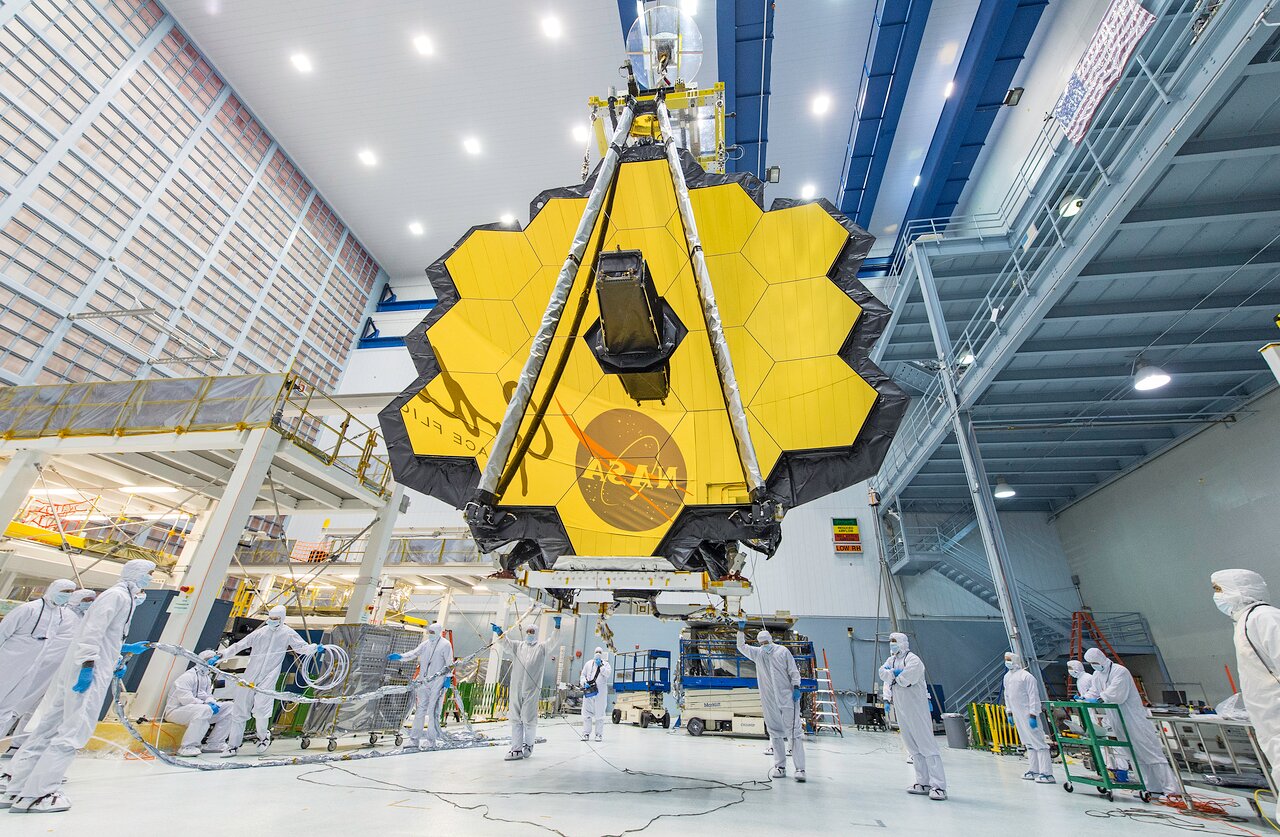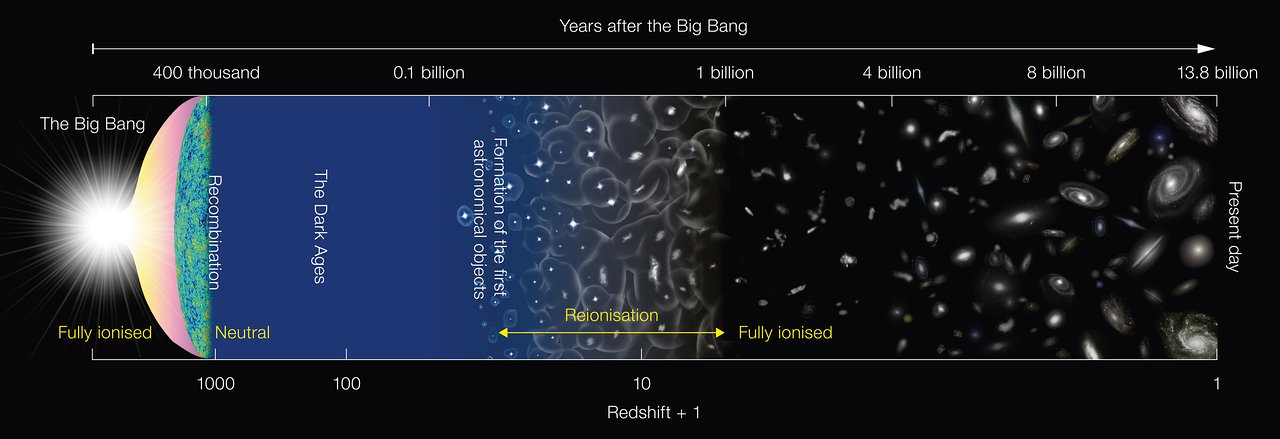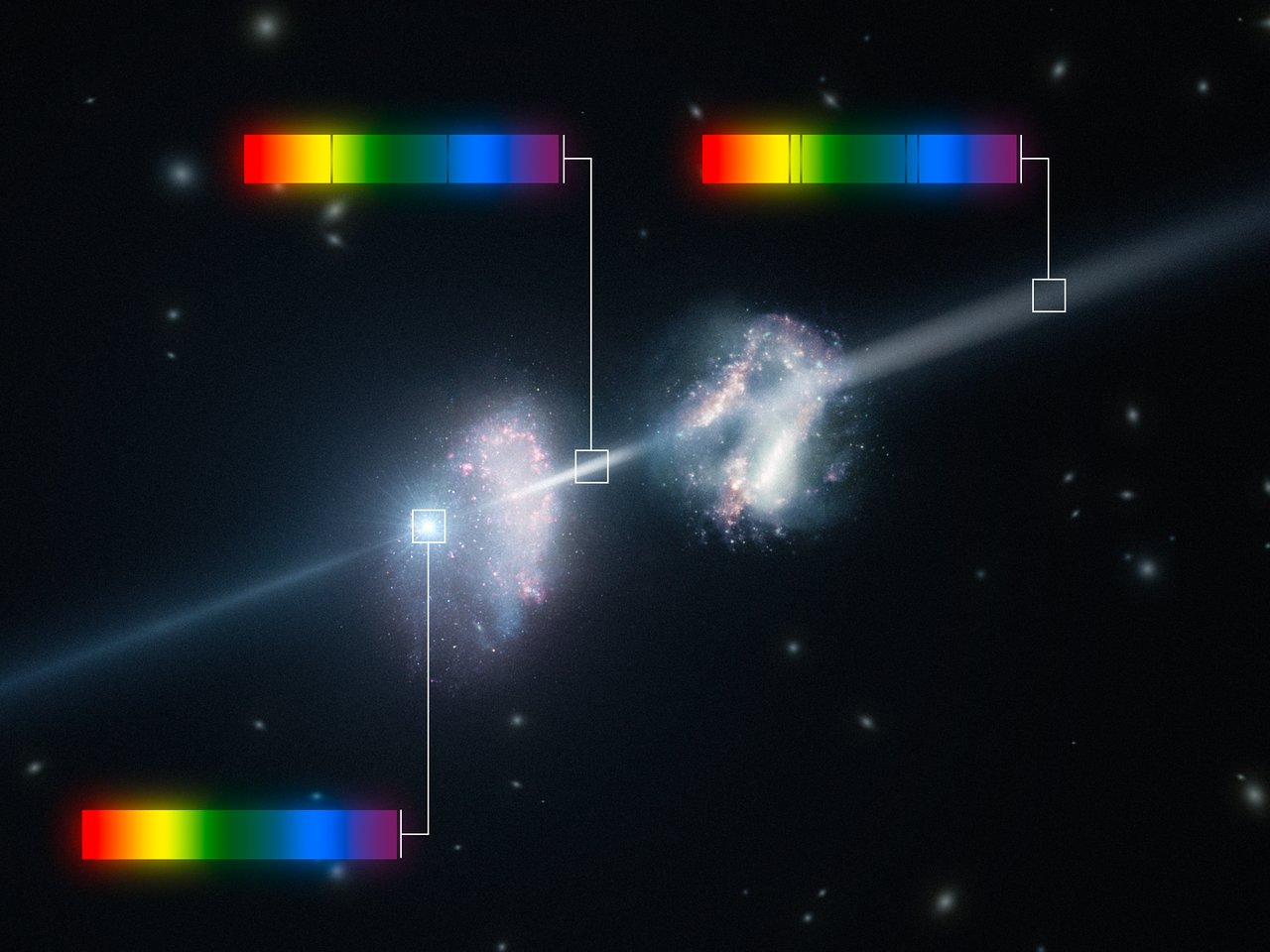
Unfolding the heavens
How the James Webb Space Telescope and the ELT will spark a new era of astronomical discoveries
- The reasons behind the unique look and design of JWST
- How JWST and ESO’s Extremely Large Telescope will cooperate to solve the mysteries of the Universe
Soon the James Webb Space Telescope (JWST) will be launched into space, and astronomers could not ask for a better present! Built by NASA, the European Space Agency (ESA) and the Canadian Space Agency, it will be the largest and most powerful space observatory ever created, scanning the heavens all the way back to the very first stars in the history of the Universe. But how does it work? Which cosmic secrets will it unlock? And how will it join forces with other astronomical Goliaths like ESO’s Extremely Large Telescope?
Given all the breakthrough discoveries made in the last years, this truly is a golden age for astronomy; an age about to get even brighter with the beginning of JWST’s adventure.
Unfolding a telescope; unfolding the Universe
JWST is the result of more than two decades of work by thousands of scientists and engineers located in 14 countries, with astronomers from 41 countries having been awarded observing time during the first year of science operations. A really international endeavour spanning the whole globe!
It will build upon its illustrious forebears, the NASA/ESA Hubble Space Telescope and NASA’s Spitzer Space Telescope, and it will probe the cosmos in the infrared. This brings two main benefits: first, infrared light is not blocked by the thick, giant clouds of dust wandering in space. This allows astronomers to see the cosmic objects behind the clouds which would otherwise remain hidden in visible light. Second, it will enable JWST to admire some of the very first stars and galaxies in the history of the cosmos. This is because the universe is expanding, meaning their ancient visible light has been stretched to longer infrared wavelengths on its journey to us.

As heavy as a school bus, once launched JWST will be travelling for one month to the so-called second Lagrange point (L2) of the Sun-Earth system. This will be its future home for the five to ten years of expected mission duration. A mobile home, though, as L2 — approximately 1 500 000 km from the Earth opposite to the Sun — also orbits our star over the year. L2 was chosen because there the combined inward gravitational pull of both the Sun and the Earth allow JWST to orbit the Sun in one year; otherwise at that distance it would drift behind us.
Being at L2 will allow JWST to keep its massive sunshield, as large as a tennis court, permanently oriented towards the Sun and the Earth, blocking their radiation. The telescope needs to be kept at an extremely cold temperature of -230 ºC, otherwise the thermal radiation from the telescope itself would blind the astronomical observations at infrared wavelengths.
JWST’s primary mirror is 6.5-metres wide and is segmented into 18 hexagonal pieces.These segments are made of beryllium and covered in a layer of gold to optimise the reflection of incoming infrared light. The gold layer is extremely thin: only about 700 atoms, for an amount of gold of just 48 grams for the entire mirror!

To fit such a huge telescope in the Ariane 5 rocket that will launch it into space, JWST was cleverly designed to be folded. Once in space, the sunshield and mirror will unfold in a complex origami manoeuvre.
Later this decade, JWST will be joined in its mission to unravel the cosmos by ESO’s Extremely Large Telescope (ELT), currently under construction in Chile’s Atacama Desert, and which will also be active in the infrared. With its 39m mirror, ESO's ELT will be the world’s biggest eye on the Universe, promising to deepen our understanding of the heavens.
The ELT and JWST will nicely complement each other. Being in space will allow JWST to be extremely sensitive at infrared wavelengths, and it won't have to worry about the blurring caused by atmospheric turbulence. The ELT, on the other hand, has a much larger mirror, and after correcting atmospheric turbulence with adaptive optics it will be able to obtain even sharper images. One drawback of JWST being at L2 is that upgrades won't be possible, which is not an issue for the ELT. Both telescopes carry a suite of sophisticated instruments that will tackle similar problems in a complementary way, and astronomers are already rubbing their hands. Let’s see why.
Let there be light
No planets, no stars, no galaxies. Just a mist of hydrogen and helium gas and, possibly, dark matter. At the beginning of its so-called cosmic dark ages, approximately 400 000 years after the Big Bang, the Universe must have been a pretty boring place to visit. Until the first stars started lighting up here and there.
We think those first stars were massive beasts — from a few tens to several hundreds of times our Sun. They were living a fast and furious lifestyle, only surviving for a few million years during which they emitted intense high-energy radiation, before exploding as supernovae. Relentlessly, this energetic radiation stripped the surrounding hydrogen and helium from their electrons, the so-called reionisation.
But dark ages are hard to come out of, and the cosmic one was no exception. Reionisation did not happen overnight all over the Universe. Most likely, it started in cosmic bubbles scattered here and there. Where were these first pockets and how big were they? How did reionisation extend throughout the whole Universe? How exactly did the first stars look?
We do not know the answer...yet, as ESO's ELT and JWST will push back the limits of what we can currently observe, back to the edge of the dark ages, unveiling how and when light in the Universe was switched on.
A long time ago, in a galaxy far, far away...
The stars born during the dark ages came together to form the first galaxies populating the cosmos. These ancient galaxies were probably rather small and irregularly shaped. Over time, they merged into each other, leading to larger, more structured galaxies. But how exactly this happened is still unknown.
ESO's ELT and JWST will be able to study galaxies all over the history of the cosmos, analysing their shapes, chemical composition and at what rate they form stars. In their search, they will be helped by radio telescopes such as the Atacama Large Millimeter/submillimeter Array (ALMA) in Chile, in which ESO is a partner, which maps the distribution of the cold gas out of which stars form. By comparing galaxies across different cosmic eras, astronomers will be able to draw a picture of how they form and evolve.
Strongly related with the study of galaxies is the investigation of the intergalactic medium — the matter in the space between galaxies. Believed to make up most of the visible matter in the Universe, it is the descendant of the mist of hydrogen and helium from the dark ages. Little is known about it, but astronomers are aware of its interplay with galaxies. On one hand, the intergalactic medium can feed galaxies with pristine gas, fueling the birth of new stars. On the other hand, galaxies can influence the properties of the intergalactic medium through the energy and gas they expel into it. ESO's ELT and JWST will allow the intergalactic medium to be mapped to the distant corners of the Universe, shedding new light on its nature.
Another problem that these two telescopes will tackle is the nature of dark matter and dark energy, which still cause astronomers to scratch their heads. Dark matter is believed to be distributed all over the cosmos, forming huge halos around galaxies. Without it, and given our current understanding of gravity, it’s hard to explain the large scale structure of the universe and why galaxies spin the way they do. Dark energy, on the other hand, is thought to cause the accelerated expansion of the Universe. Through the detailed analysis of galaxies at different distances, astronomers hope to finally break the code of these two enigmas of the cosmos.
We are all made of stardust
The life cycle of stars is another hot topic in astronomy. That’s quite understandable considering the building blocks of literally everyone on this planet — including you — are forged in stars.
Stars form in massive clouds of gas and dust. These clouds are transparent to infrared light, which the ELT and JWST will use to gaze into them with unprecedented detail, opening a new window on how stars and planets form and develop.
In addition to baby stars, the two telescopes will also investigate more mature ones, both in the Milky Way and beyond, as their chemical compositions and motions tell the story of how their host galaxies were assembled.
And then, just like us humans, stars will eventually die. Low-mass stars die quietly, whereas massive ones end with huge supernova explosions. Studying supernovae with JWST and ESO's ELT will allow us not only to understand how these explosions occur, but also how the elements forged in the stars are expelled into the Universe to one day form new stars, planets and, possibly, living beings.
The most massive supernovae are also one of the sources of high-energy radiation flashes known as gamma-ray bursts, the most energetic events in the Universe. The ELT and JWST will be able to spot them across most epochs in the history of the Universe, using them as powerful beacons to go all the way back to the end of the dark ages.
The world is not enough
The Earth is just one of billions of planets out there in the Universe. How the Solar System formed and whether there is life somewhere else in the Universe are two of the deepest questions humanity has ever pondered. Searching for other planets and studying the thousands we already know are the only way to find the answer.
To find unknown worlds, ESO's ELT will be a formidable ace up astronomers’ sleeve. It will use the so-called radial velocity method — basically, inferring the presence of a planet from how its gravitational pull influences the motion of the parent star — with unprecedented accuracy. This will help us to spot many new rocky planets, like the Earth or Mars. These are much smaller than gas giants — such as Jupiter — and, hence, more difficult to find due to the weaker gravitational effect on the star’s motion. Rocky planets, when placed at the right distance from their star to host liquid water on the surface, are the most likely candidates to host life as we know it.
The ELT will also be able to directly image alien worlds. A challenging feat, as planets are often outshone by their parent star — and this is why such observations are typically done in the infrared, where the difference in brightness between the planet and the star is milder. But a necessary one to characterise the physical properties of the planet, such as mass and size.
The next step after discovering a planet is to study its atmosphere. To understand which molecules make it up, astronomers peer at the planet when it passes between us and the star. This way, the light from the star reaches us after crossing the atmosphere and by checking which wavelengths have been absorbed, researchers can determine its composition. The ELT and JWST will excel in this and may be the first to find traces of life outside the Earth.
ESO's ELT and JWST will not only study mature planets, but also unlock the secrets of worlds still in the process of forming. They will look at the so-called protoplanetary discs around newly born stars, from which planetary systems emerge. Thanks to their unprecedented accuracy, they will be able to probe the inner regions of these gaseous structures, where rocky planets form, beautifully complementing observations of the colder, outer regions home to gas giants done with radio telescopes such as ALMA.
Of course, the ELT and JWST will not overlook our neighbours within the Solar System. They will use their powerful eyes to probe the surface and atmosphere of planets, moons, comets and asteroids, giving us a new perspective on our home planetary system.
After all, sometimes in life answers could be much closer than we think.
Links
Biography Giulio Mazzolo
Giulio Mazzolo is a science journalism intern at ESO. Before starting a career in science communication, he completed a PhD in astrophysics from the Max Planck Institute for Gravitational Physics in Hannover (Germany) and has been a member of the LIGO Scientific Collaboration.




